A reblog of nerdy and quirky stuff that pique my interest.
291 posts
Latest Posts by philosophical-amoeba - Page 10




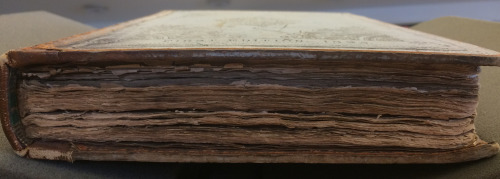




Happy almost birthday, Shakespeare! Or should I say Bard-thday? Recently, in honour of the 400th anniversary of William Shakespeare’s death (conveniently for celebratory purposes, he was born on April 23 1564 and died on the same day in 1616), I was given the incredible opportunity to have a private audience to go through the University of Glasgow’s copy of the First Folio, page by page. I’ve written a short article for the University Library’s blog, which you can find here, but I wanted to share some other images on my own blog that I didn’t have room for on the official post!
The University of Glasgow’s First Folio (more properly known as Mr. William Shakespeare’s Comedies, Histories, & Tragedies) is able to tell so many more stories than those of the plays contained in its pages- of the history of the antiquarian book trade, of the printing practices of the Renaissance, of book ownership and value. Rest assured, you’ll probably be seeing posts from me in the future about all of these things, as well as the typographical ornaments used in the book, which I found fascinating. The University’s Folio is particularly interesting due to the notations by past owners, including one who had apparently seen at least one of the original Chamberlain’s Men “By eyewittnesse”. But my favourite bit of the later additions is the morbid little poem on the reverse of one of the flyleaves: “Pitty it is the fam’d Shakespeare/ Shall ever want his chin or haire.”










My boyfriend, @inlove-with-a-spine, is very uninformed about Southeast Asian fruits (he only knows durian) which inspired me to find these online.
I’m pretty sure the names are different in other Southeast Asian countries, though.
From left to right (in Indonesian):
Duku
Jambu monyet
Jeruk
Lengkeng
Kedondong
Manggis
Rambutan
Nangka
Salak
Sawo

The beautiful stone church at Gallarus, Dingle, Co. Kerry, Ireland. It’s circa 1000 years old
The anime ‘Romeo’s Blue Skies’ is based on a book about a true event which happened in the south of Switzerland unti the 19th century: young boys being sold to Milano to work there as chimney sweepers. There is also a German movie about it called ‘Die Schwarzen Brüder’ [the Black Brothers]. You can watch the trailer here
List of Free Science Books
Here’s an alphabetical list of all available free books. Note that many of the links will bring you to an external page, usually with more info about the book and the download links. Also, the links are updated as frequently as possible, however some of them might be broken. Broken links are constantly being fixed. In case you want to report a broken link, or a link that violates copyrights, use the contact form.
A
A Beginner’s Guide to Mathematica
A Brief Introduction to Particle Physics
A First Course in General Relativity
A New Astronomy
A No-Nonsense Introduction to General Relativity
A Popular History of Astronomy During the Nineteenth Century, Fourth Edition
A Review of General Chemistry
A Simple Guide to Backyard Astronomy
A Text Book for High School Students Studying Physics
A Tour of Triangle Geometry
About Life: Concepts in Modern Biology
Acoustic Emission
Adaptive Control
Advanced Calculus
Advanced Learning
Advanced Mathematics for Engineers
Advanced Microwave Circuits and Systems
Advanced Technologies
Advances in Computer Science and IT
Advances in Evolutionary Algorithms
Advances in Geoscience and Remote Sensing
Advances in Haptics
Advances in Human Computer Interaction
Age of Einstein
Aging by Design
AMPL: A Modeling Language for Mathematical Programming
An Introduction to Elementary Particles
An Introduction to Higher Mathematics
An Introduction to Many Worlds in Quantum Computation
An Introduction to Mathematical Reasoning
An Introduction to Mathematics
An Introduction to Proofs and the Mathematical Vernacular
An Introduction to Relativistic Quantum Mechanics
Analysis 1 (Tao T)
Analysis 2 (Tao T)
Analytic Functions
Astronomical Discovery
Astronomy for Amateurs
Astronomy Today
Astronomy with an Opera-Glass
Automation and Robotics
B
Basic Algebra, Topology and Differential Calculus
Basic Concepts of Mathematics
Basic Concepts of Thermodynamics
Basic Concepts of Thermodynamics Chapter 1
Basic Ideas in Chemistry
Basic Math: Quick Reference eBook
Basic Mathematics for Astronomy
Basic Physics
Basic Positional Astronomy
Basic Principles of Classical and Statistical Thermodynamics
Basic Principles of Physics
Basics of Physics
Beginner’s Botany
Biochemistry
Biochemistry (practice book)
Biology
Board Notes for Particle Physics
Book of Proof
C
Calculus
Calculus Based Physics
Celestial Navigation, Elementary Astronomy, Piloting
Circuit QED — Lecture Notes
Classical Dynamics
Classical Geometry
Classical Mechanics
Climate Models
Collaborative Statistics
College Algebra
Complex Analysis
Computational Geometry
Computational Introduction to Number Theory and Algebra
Computational Physics with Python
Conceptual Physics
Consistent Quantum Theory
Cook-Book Of Mathematics
College Physics
Crude Oil Emulsions- Composition Stability and Characterization
Curiosities of the Sky
D
Decoherence: Basic Concepts and Their Interpretation
Do We Really Understand Quantum Mechanics?
Differential Equations
Diophantine Analysis
Discover Physics
Dr. Donald Luttermoser’s Physics Notes
Dynamics and Relativity
E
Earthquake Research and Analysis
Earthquake-Resistant Structures – Design, Assessment and Rehabilitation
Einstein for Everyone
Electromagnetic Field Theory
Elementary Mathematical Astronomy
Elementary Linear Algebra
Elementary Particle Physics in a Nutshell
Elementary Particles in Physics
Elements of Astrophysics
Embedded Systems – Theory and Design Methodology
Encyclopaedia of Mathematics
Encyclopedia of Astrophysics
Engineering Mathematics 1
Engineering Mathematics with Tables
Essential Engineering Mathematics
Essential Physics
Exoplanet Observing for Amateurs
Experimental Particle Physics
F
Fields
Foundations of Nonstandard Analysis
Frequently Asked Questions about Calendars
Fundamental Concepts of Mathematics
Fundamentals of Analysis (Chen W.W.L)
Further Mathematical Methods
Fusion Physics
G
General Chemistry
General Relativity
General Relativity
Geometric Asymptotics
Geometry and Group Theory
Geometry and Topology
Geometry Formulas and Facts
Geometry Study Guide
Geometry, Topology and Physics
Geometry, Topology, Localization and Galois Symmetry
Great Astronomers
H
Handbook of Formulae and Physical Constants
High School Mathematics Extensions
Higher Mathematics for Engineers and Physicists
History of Astronomy
Homeomorphisms in Analysis
How to Use Experimental Data to Compute the Probability of Your Theory
I
Intelligent Systems
Intrinsic Geometry of Surfaces
Introduction to Astronomy and Cosmology
Introduction to Cancer Biology
Introduction to Chemistry
Introduction to Cosmology
Introduction to Elementary Particles
Introduction to General Relativity
Introduction To Finite Mathematics
Introduction to Particle Physics Notes
Introduction to PID Controllers
Introduction to Quantum Mechanics with Applications to Chemistry
Introduction to Quantum Noise, Measurement and Amplification
Introduction to Social Network Methods
Introduction to String Field Theory
Introduction to the Time Evolution of Open Quantum Systems
Introduction to Quantum Mechanics
Introductory Computational Physics
Introductory Physics 1
Introductory Physics 2
K
Kinetic Theory
L
Laboratory Manual for Introductory Physics
Laws of Physics
Learn Physics Today
Lecture Notes in Discrete Mathematics
Lecture Notes in Quantum Mechanics
Lecture Notes in Nuclear and Particle Physics
Lecture Notes in Particle Physics
Lecture Notes on General Relativity
Lectures on Astronomy, Astrophysics, and Cosmology
Lectures on Particle Physics
Lectures on Riemann Zeta-Function
Light and Matter
M
Mag 7 Star Atlas Project
Many Particle Physics
Math Alive
Mathematical Analysis I(Zakon E)
Mathematical Biology
Mathematical Methods
Mathematical Methods 1
Mathematical Methods for Physical Sciences
Mathematical Methods of Engineering Analysis
Mathematics, Basic Math and Algebra
Mathematics for Computer Science
Mathematics for Computer Science
Mathematics for Computer Scientists
Mathematics For Engineering Students
Mathematics Formulary
Motion Mountain
Music: A Mathematical Offering
Mysteries of the Sun
N
Natural Disasters
New Frontiers in Graph Theory
Noise Control, Reduction and Cancellation Solutions in Engineering
Nondestructive Testing Methods and New Applications
Nonlinear Optics
Notes on Coarse Geometry
Notes on Elementary Particle Physics
Notes on Quantum Mechanics
O
Observing the Sky from 30S
On Particle Physics
Operating Systems: Three Easy Pieces
P
Particle Physics Course Univ. Cape Town
Particle Physics Lecture Notes
People’s Physics Book
Perspectives in Quantum Physics: Epistemological, Ontological and Pedagogical
Photons, Schmotons
Physics Lectures
Physics Tutorials
Physics Study Guides
Pioneers of Science
Practical Astronomy
Practical Astronomy for Engineers
Preparing for College Physics
Primer Of Celestial Navigation
Principal Component Analysis – Multidisciplinary Applications
Publications of the Astronomical Society of the Pacific Volume 1
Q
Quantum Dissipative Systems
Quantum Field Theory
Quantum Fluctuations
Quantum Information Theory
Quantum Magnetism
Quantum Mechanics
Quantum Mechanics
Quantum Mechanics: A Graduate Course
Quantum Mechanics: An Intermediate Level Course
Quantum Notes
Quantum Physics Notes
Quantum Theory of Many-Particle Systems
Quantum Transients
R
Recreations in Astronomy
Relativistic Quantum Dynamics
Relativity: The Special and General Theory
Review of Basic Mathematics
Riemann Surfaces, Dynamics and Geometry Course Notes
S
Short History of Astronomy
Sintering of Ceramics – New Emerging Techniques
Solitons
Some Basic Principles from Astronomy
Special Relativity
Spherical Astronomy
Star-Gazer’s Hand-Book
Statistical Physics
Street-Fighting Mathematics
String Theory
Structures of Life
Supernova Remnants: The X-ray Perspective
Superspace: One Thousand and One Lessons in Supersymmetry
System of Systems
T
The Astrobiology Primer: An Outline of General Knowledge
The Astronomy and the Bible
The Astronomy of the Bible: An Elementary Commentary on the Astronomical References of Holy Scripture
The Basic Paradoxes of Statistical Classical Physics and Quantum Mechanics
The Beginning and the End
The Beginning and the End of the Universe
The Complete Idiot’s Guide to the Sun
The Convenient Setting of Global Analysis
The Eightfold Way: The Beauty of Klein’s Quartic Curve
The General Theory of Relativity
The Geology of Terrestrial Planets
The Geometry of the Sphere
The Handbook of Essential Mathematics
The Moon: A Full Description and Map of its Principal Physical Features
The Open Agenda
The Origin of Mass in Particle Physics
The Particle Detector Brief Book
The Physics Hypertextbook
The Physics of Quantum Mechanics
The Planet Mars
The Small n Problem in High Energy Physics
The Story of Eclipses
The Story of the Heavens
The Structure of Life
The Wonder Book of Knowledge
The World According to the Hubble Space Telescope
The Zij as-Sanjari of Gregory Chioniades (June 27, 2009)
Three Dimensional Geometry
U
Understanding Physics
Unfolding the Labyrinth
Utility of Quaternions in Physics
Uses of Astronomy



Photographer Florent Tanet’s precarious (non-photoshopped) ‘equilibrium’ series
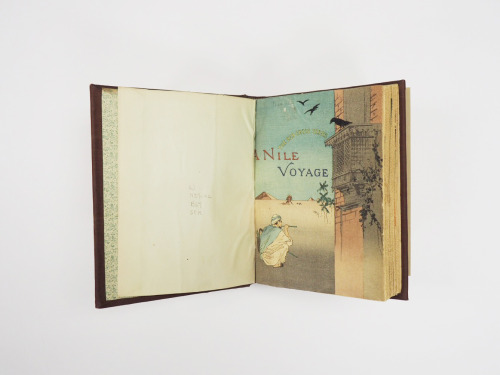
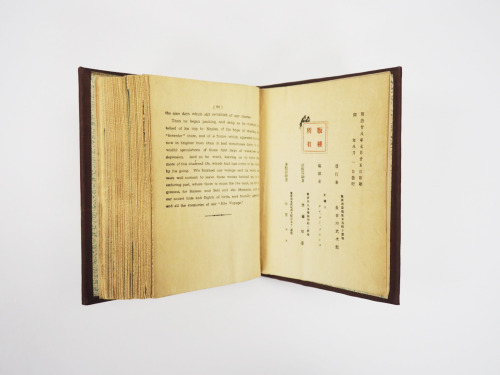

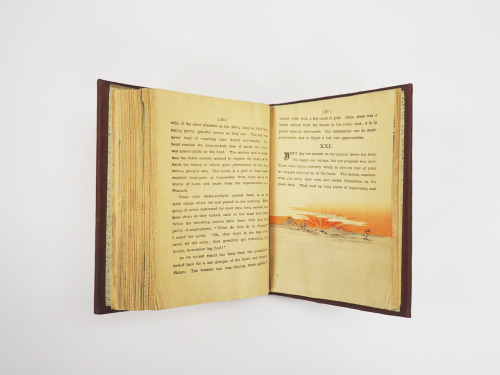
Ancient Egypt as seen through western eyes is mostly monumental and remote, distant in time and overwhelming in scale. The earliest western illustrations and photographs of Egypt regularly emphasized size and stillness; romantic artists of the nineteenth century frequently placed people in vast desert landscapes—the figures small and insignificant, lost in the deep antiquity of an unchanging land.
This grand vision of Egypt is so firmly fixed in western culture that discovering a different interpretation comes as a revelation. Fortunately, the Brooklyn Museum Wilbour Library of Egyptology owns a rare treasure that offers an alternate view. A Nile Voyage of Recovery, by Charles and Susan Bowles was published in Japan by Hasegawa Takejirō [長谷川武次郎 in 1896. Hasegawa was Japanese publisher active in the late nineteenth century who specialized in books in European languages, often for Japan’s tourist trade and resident foreign community, which included many English missionaries. The volume is part of the Red Cross series. During this time period, the Red Cross was active in setting up libraries and creating publications for soldiers in hospitals and recovery centers around the world.
Many of Hasegawa’s early books were in the form of chirimen-bon (ちりめん本) or crêpe paper books. Chirimen, or crepe, is a Japanese textile with a soft, slightly wrinkly texture that’s often used in Japan to make kimonos, or for wrapping cloth. Hasegawa used the material to produce small, delicate books that can be held in the hand with the pages unfolding easily like fabric.
Our chirimen-bon of A Nile Voyage of Recovery is illustrated with graceful, color woodblock prints of Egyptian scenes and adorned with exquisite typography. The images are gentle and intimate, emphasizing details and delicate color. Even a portrayal of the great pyramid gives more page-room to rays of light and the sun rather than the monuments. The Sphinx does not dominate; it’s rather an integral part of the landscape.
Why study this human-scale Egypt? Because the purpose of art after all is to unsettle the conventional view—and whenever we see the world through other eyes, we see something new.
Posted by Roberta Munoz Photos by Brooke Baldeschwiler
Complex learning dismantles barriers in the brain
Biology lessons teach us that the brain is divided into separate areas, each of which processes a specific sense. But findings published in eLife show we can supercharge it to be more flexible.

Scientists at the Jagiellonian University in Poland taught Braille to sighted individuals and found that learning such a complex tactile task activates the visual cortex, when you’d only expect it to activate the tactile one.
“The textbooks tell us that the visual cortex processes visual tasks while the tactile cortex, called the somatosensory cortex, processes tasks related to touch,” says lead author Marcin Szwed from Jagiellonian University.
“Our findings tear up that view, showing we can establish new connections if we undertake a complex enough task and are given long enough to learn it.”
The findings could have implications for our power to bend different sections of the brain to our will by learning other demanding skills, such as playing a musical instrument or learning to drive. The flexibility occurs because the brain overcomes the normal division of labour and establishes new connections to boost its power.
It was already known that the brain can reorganize after a massive injury or as a result of massive sensory deprivation such as blindness. The visual cortex of the blind, deprived of its input, adapts for other tasks such as speech, memory, and reading Braille by touch. There has been speculation that this might also be possible in the normal, adult brain, but there has been no conclusive evidence.
“For the first time we’re able to show that large-scale reorganization is a viable mechanism that the sighted, adult brain is able to recruit when it is sufficiently challenged,” says Szwed.
Over nine months, 29 volunteers were taught to read Braille while blindfolded. They achieved reading speeds of between 0 and 17 words per minute. Before and after the course, they took part in a functional Magnetic Resonance Imaging (fMRI) experiment to test the impact of their learning on regions of the brain. This revealed that following the course, areas of the visual cortex, particularly the Visual Word Form Area, were activated and that connections with the tactile cortex were established.
In an additional experiment using transcranial magnetic stimulation, scientists applied magnetic field from a coil to selectively suppress the Visual Word Form Area in the brains of nine volunteers. This impaired their ability to read Braille, confirming the role of this site for the task. The results also discount the hypothesis that the visual cortex could have just been activated because volunteers used their imaginations to picture Braille dots.
“We are all capable of retuning our brains if we’re prepared to put the work in,” says Szwed.
He asserts that the findings call for a reassessment of our view of the functional organization of the human brain, which is more flexible than the brains of other primates.
“The extra flexibility that we have uncovered might be one those features that made us human, and allowed us to create a sophisticated culture, with pianos and Braille alphabet,” he says.

Which Shakespeare Play Should I See?
This coming Saturday is the 400th anniversary of Shakespeare’s death! Not sure what Shakespeare play you should see or read to commemorate the occasion? No worries! I’ve put together a little flowchart to help you make up your mind.
HAPPY SHAKESPEARE-ING, EVERYONE!
Word of the Day: philodox
n. A person who loves or vehemently propounds his or her own opinions; a dogmatic or argumentative person

Image: “Savonarola Preaching Against Prodigality” by Ludwig von Langenmantel. Public Domain via Wikimedia Commons



Meet the orchid mantis.
Orchid mantises—particularly juveniles—seem aptly named. They’re predominantly white with pink or yellow accents, similar to some orchids and other flowers, and their four hind legs are lobed, like petals. But if you search for an exact floral counterpart, as behavioral ecologist James O’Hanlon did, you probably won’t find one. “I spent forever looking for a flower that they look just like,” he says, to no avail.
As it turns out, rather than mimicking one floral species, the insect instead may embody a “generic or an average type of flower” in order to attract bees and other pollinating insects as prey.
What’s more, as far as O’Hanlon can tell, it’s the only animal on record that “takes on the guise of a whole flower blossom” as a predatory strategy.
Learn more here.

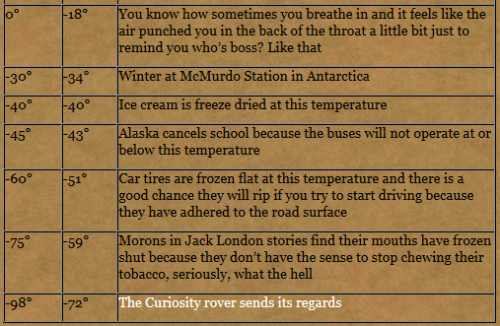
A temperature chart for my fellow Americans who can’t do the Celsius-Fahrenheit equation from memory and for people in the civilized countries who’re too busy making fun of Fahrenheit to do the conversions themselves.

Look! A scientist who says more scrutiny is needed! Yea!
AND - “Don’t try this at home!”
Cadaver study casts doubts on how zapping brain may boost mood, relieve pain
Earlier this month, György Buzsáki of New York University (NYU) in New York City showed a slide that sent a murmur through an audience in the Grand Ballroom of New York’s Midtown Hilton during the annual meeting of the Cognitive Neuroscience Society. It wasn’t just the grisly image of a human cadaver with more than 200 electrodes inserted into its brain that set people whispering; it was what those electrodes detected—or rather, what they failed to detect.
When Buzsáki and his colleague, Antal Berényi, of the University of Szeged in Hungary, mimicked an increasingly popular form of brain stimulation by applying alternating electrical current to the outside of the cadaver’s skull, the electrodes inside registered little. Hardly any current entered the brain. On closer study, the pair discovered that up to 90% of the current had been redirected by the skin covering the skull, which acted as a “shunt,” Buzsáki said.
The new, unpublished cadaver data make dramatic effects on neurons unlikely, Buzsáki says. Most tDCS and tACS devices deliver about 1 to 2 milliamps of current. Yet based on measurements from electrodes inside multiple cadavers, Buzsaki calculated that at least 4 milliamps—roughly equivalent to the discharge of a stun gun—would be necessary to stimulate the firing of living neurons inside the skull. Buzsáki notes he got dizzy when he tried 5 milliamps on his own scalp. “It was alarming,” he says, warning people not to try such intense stimulation at home.
Buzsáki expects a living person’s skin would shunt even more current away from the brain because it is better hydrated than a cadaver’s scalp. He agrees, however, that low levels of stimulation may have subtle effects on the brain that fall short of triggering neurons to fire. Electrical stimulation might also affect glia, brain cells that provide neurons with nutrients, oxygen, and protection from pathogens, and also can influence the brain’s electrical activity. “Further questions should be asked” about whether 1- to 2-milliamp currents affect those cells, he says.
Buzsáki, who still hopes to use such techniques to enhance memory, is more restrained than some critics. The tDCS field is “a sea of bullshit and bad science—and I say that as someone who has contributed some of the papers that have put gas in the tDCS tank,” says neuroscientist Vincent Walsh of University College London. “It really needs to be put under scrutiny like this.”
It’s time for everyone to agree that octopuses aren’t from Earth
Today on the show, we talked about Inky, an octopus that recently escaped from a New Zealand aquarium. We had a hard time believing some of the things we heard about Inky’s “great escape” — so we started to snoop around on octopuses.
Turns out we didn’t know the half of it.
Here are just a few of the craziest things we learned about them:
1. Octopuses can taste with all of their skin, but especially well with their suckers

2. They can squeeze through tiny spaces very easily. A 100-lb. octopus can easily fit through an opening the size of an orange.
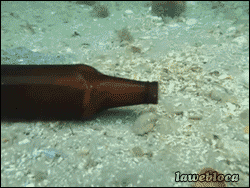
3. They’re also crazy strong. A 3-inch-diameter sucker on a giant Pacific octopus can lift 30 pounds.

4. They’re brilliant camouflage artists, and can completely change color in a blink of an eye.

5. On a sad note, some octopuses have been known to eat their own arms. Scientists think it may be a response to stress or some kind of infection.

6. They actually escape from aquariums quite often. Octopuses are very curious animals, and are extremely effective problem-solvers.
They can also open jars. JARS THAT THEY’RE INSIDE OF.
In the end, Inky successfully made his way back to the sea, leaving only a trail of water from his tank to that drainpipe of freedom. 🐙

Prevalence of homosexuality in men is stable throughout time since many carry the genes
Around half of all heterosexual men and women potentially carry so-called homosexuality genes that are passed on from one generation to the next. This has helped homosexuality to be present among humans throughout history and in all cultures, even though homosexual men normally do not have many descendants who can directly inherit their genes. This idea is reported by Giorgi Chaladze of the Ilia State University in Georgia, and published in Springer’s journal Archives of Sexual Behavior. Chaladze used a computational model that, among others, includes aspects of heredity and the tendency of homosexual men to come from larger families.
Chaladze, G. Heterosexual Male Carriers Could Explain Persistence of Homosexuality in Men: Individual-Based Simulations of an X-Linked Inheritance Model. Archives of Sexual Behavior, 2016 DOI: 10.1007/s10508-016-0742-2

How hard-wired are human beings for polygamy?






